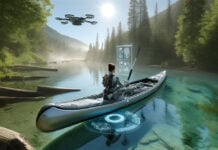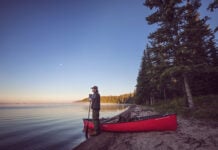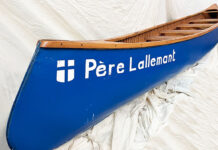There’s an ancient green 17-foot Old Town Tripper on the rack out back that, after countless river miles and more than a half-century of service, paddles just as well as she did new. The boat is a brute to portage thanks to its high weight and windage, but back in the day the vinyl/ABS Oltonar hull had many advantages over aluminum—the latter sticking to rocks, putting black stuff on everything and being cold to paddle on Arctic rivers—and cedar canvas, which was far from forgiving when crashing into rocks.
The good fairy: Features on our tripping canoe wishlist
Even then, there were features I wished it had. The vinyl on the outside was soft and would wear through with abrasion, so the fix there was Kevlar skid plates stuck to the stems with epoxy resin. To rig a sail, I glued a little mast step to the floor, added a couple of anchors for stays and a cleat on the rear thwart for the main sheet. And, because my partner had a twitchy lower back, we reset the front seat with a little forward cant and added a backrest from one of those twirly chairs you’d see in a fishing boat.
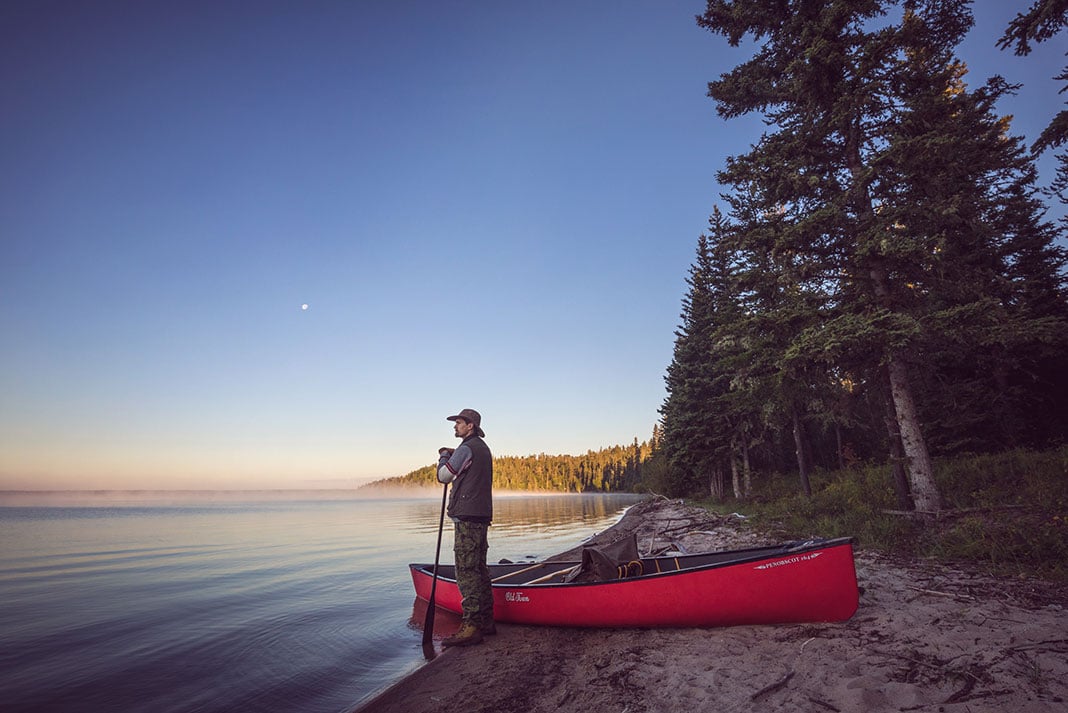
With those minor modifications, that green boat has taken us beyond the many coastlines of our dreams. It has carried dogs and children, dried food, neighbors, firewood, Christmas boughs from waterside hemlocks, packs, wanigans, chunks of flotation and God knows what else. But thanks to being borne by the meditative cadence of 37 strokes a minute for days, sometimes weeks, on end, the big green canoe has absorbed its share of other daydreams and musings about what tripping canoes might have, in terms of qualities, accessories and accoutrements.
Back in the low-tech 70s, those musings coalesced into a short article for Canoe magazine entitled “Beam Me Up Scotty” which was all about the then sci-fi dream of satellite navigation—imagine knowing exactly where you are without looking at the map—and some kind of communication technology that would keep us connected to the home front and allow us to call for help in the event of a calamity. Now we have SPOT two-way satellite messengers, Garmin GPSs, satellite phones and, in many formerly remote areas, five-bar mobile phone service thanks to cell towers disguised (but not very well) as pine trees mingling in the forest. All that to say, paddling daydreams aside, it’s probably good to remember to be careful what we wish for.
Your wish is their command
It seems at every turn, the industry, like the good fairy, has delivered our every wish. Want a lighter boat? Enter carbon fiber and air-bagged epoxy construction. External loads on floatplanes are problematic? Enter packrafts and pack canoes. Not crazy about yoke portaging? Enter the portage cart. Speed an issue? Enter asymmetric hulls and the application of cool naval architecture below the waterline, leaving the sheer as smooth and romantic as ever. The only thing I might wish for now is a Bluetooth speaker in the sponsons. Or maybe photovoltaic skin powering a multitude of plugs that are strategically placed along the inwales for charging up our trip tech. But those too seem to be inevitably well on their way to us in the marketplace. Technologically, we are awash in an embarrassment of design and innovation riches when it comes to canoes.
On the social/environmental side, there are still things I wish tripping canoes had, simple things that seem to be in diminishing supply. For starters, as we gobble up arable and undeveloped land near our cities, through which so many delightful southern rivers flow, log the snot out of our wilderness parks, and mine the mountains and barrenlands, my wish is that our canoes always have undisturbed places to trip and clean water to float them.
Finally, as recreational paddlers turn in increasing numbers away from open canoes toward SUPs, kayaks and intense on-water adventures that get them home before dinner and back to the office by morning meetings, my wish is that our tripping canoes might have people to paddle them. Nothing takes us closer to the wild than a long canoe trip and that quality of every canoe is important because, as Henry David Thoreau reminded us, “in wildness is the preservation of the world.”
James Raffan’s Tumblehome column first appeared in the Spring 2006 issue of Canoeroots.
The modern tripping canoe is what sci-fi dreams of yore are made of. | Feature photo: Trustin Timber


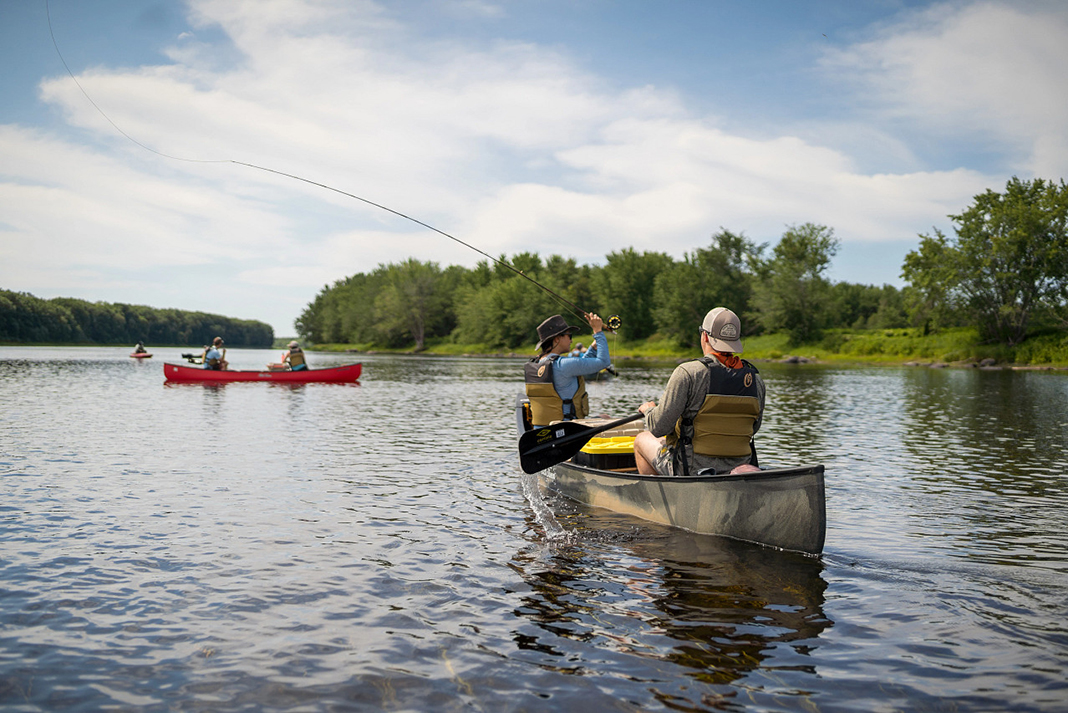
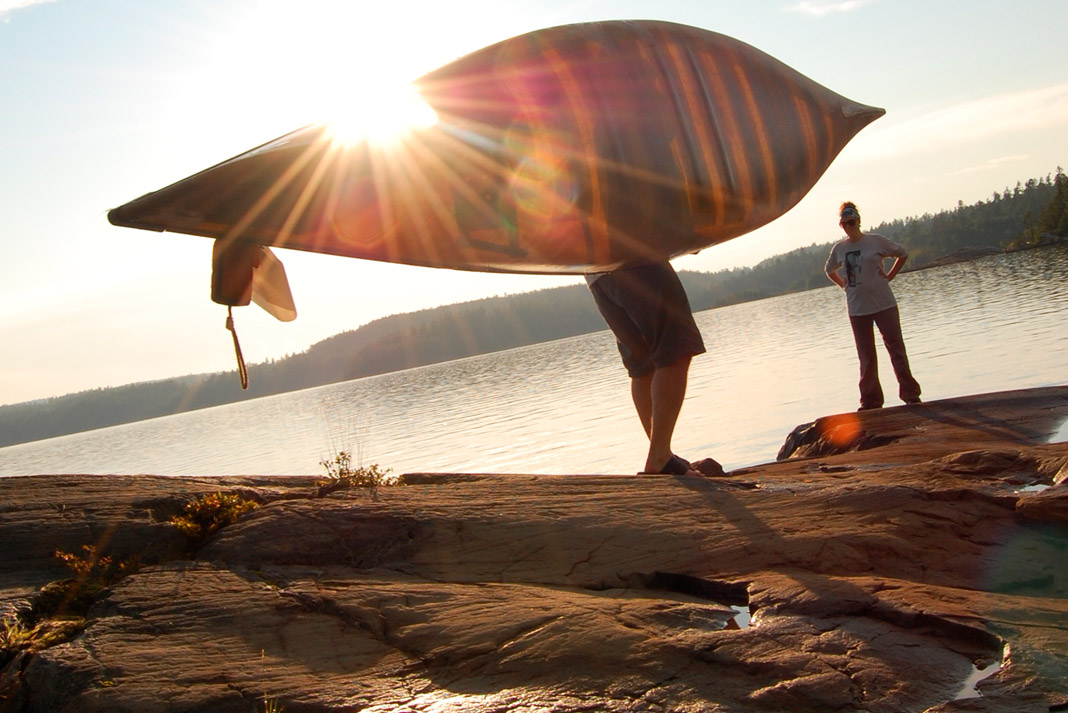
 This article was first published in the 2023 Paddling Trip Guide.
This article was first published in the 2023 Paddling Trip Guide. 
